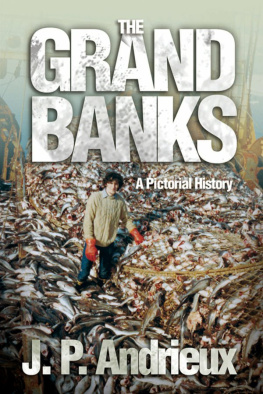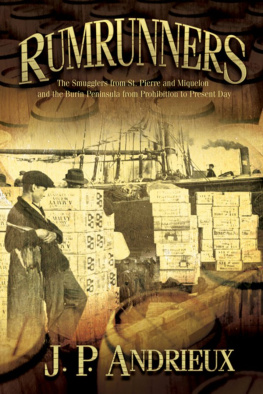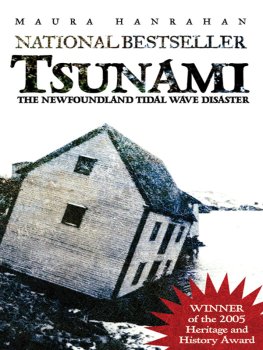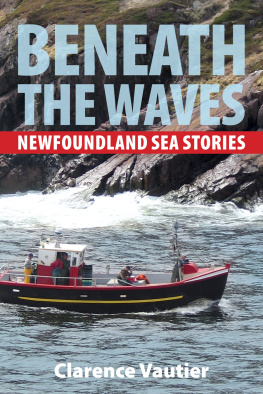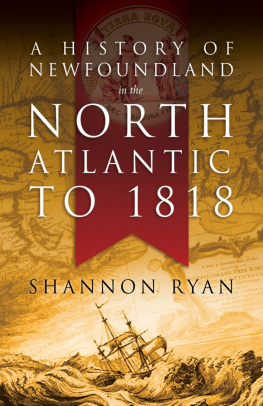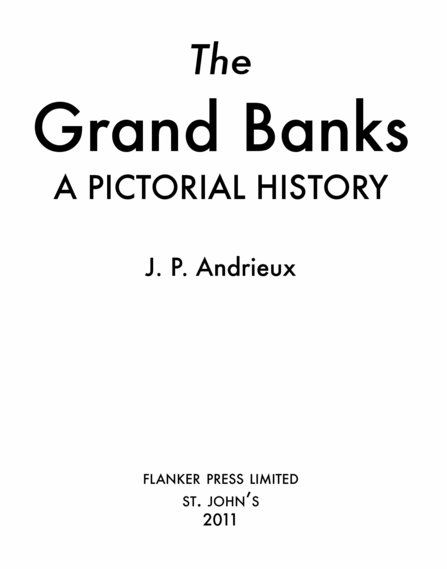The Grand Banks: a pictorial history / J. P. Andrieux.
Includes bibliographical references and index.
Issued also in electronic format.
1. Atlantic cod sheries--Grand Banks of Newfoundland--History--Pictorial works. 2. Trawlers (Vessels)--Grand Banks of Newfoundland--History--Pictorial works. 3. Fishery processing--Grand Banks of Newfoundland--History--Pictorial works. 4. Grand Banks of Newfoundland--History--Pictorial works. I. Title.
2011 by J. P. Andrieux
ALL RIGHTS RESERVED. No part of the work covered by the copyright hereon may be reproduced or used in any form or by any meansgraphic, electronic or mechanicalwithout the written permission of the publisher. Any request for photocopying, recording, taping, or information storage and retrieval systems of any part of this book shall be directed to Access Copyright, The Canadian Copyright Licensing Agency, 1 Yonge Street, Suite 800, Toronto, ON M5E 1E5. This applies to classroom use as well.
FLANKER PRESS LTD.
ST. JOHNS, NL
We acknowledge the nancial support of the Government of Canada through the Book Publishing Industry Development Program (BPIDP) for our publishing activities; the Canada Council for the Arts which last year invested $24.3 million in writing and publishing throughout Canada; the Government of Newfoundland and Labrador, Department of Tourism, Culture and Recreation.
Acknowledgements
A special thank you to Mr. Wayne Evans, Gerry Traverse, Barry Rose, Tom Yetman, Bob Power, Ches Rose, Harry Benson, Captain H. W. Stone, The Maritime History Archive, Raymond Derouet, Briand-Ozon family, Mrs. Yvonne Andrieux, Mado Sorieul, Florica Hutton, Roger Rode, Pierre Paturel-Laborde, Lucien Girardin-Dagort, Henri Girardin-Busnot, Pedro Pinto, J. Diogo, Jose Garcao, Michele vel Zompo, Sylvain Lesieur, Captain Jose Paulo Viera da Silva, Captain Chico Paiao, Captain Victorino Ramalhiera, Marcel Girardin, Dominique Berthier, Andre Orsiny, Robert Young, Roy Meyers, Pierre Gautier, Jean-Bertrand Legasse, Commander Carlos Ferrere Pery, Union Forum, Henrique Ramos Studio, Museu Municipal de Etnograa e Historia da Povoa de Varzim, Captain Dietmar Meissner, Captain T. H. Goodyear, John Drover, Daniel E. von Richtofen, Stephen Outerbridge, Jeanne Pinaquy, Roy Russell, Ben Hansen, Captain Joaquim Julio Ricardo Estrelinha, 103 Search and Rescue squadron, Vittorio Scordella, Sven Tahon, and others too numerous to mention.
The author has made every effort to identify, credit appropriately, and obtain publication rights from copyright holders of illustrations and photographs in this book. Notice of any errors or omissions in this regard will gratefully be received and corrections made in any subsequent edition.
Introduction
From the days of discovery in the late 1400s, European shermen came to the Newfoundland Region. The Basque were chiey interested in whales, rendering the fat into oil to light the lamps of Europe, while others were interested in cod. For nearly 400 years they all carried out an ecologically friendly shery. In the late 1800s, the otter trawl was invented, quickly followed by the steam trawler.
Their arrival to the Newfoundland Banks, as of 1904, and ever advancing technology, made Newfoundland shermen as early as the 1920s attempt to have these beasts of the ocean banned, as they stated that it would be the end of the shery. It would take several more years for them to be proven right.
The ever growing number of trawlers coexisted along with the traditional handliners until the outbreak of World War II. Up to this time, the only traditional shermen besides Newfoundlanders, Canadians, and Americans were the French, Portuguese, Spanish as of 1926, and Italians as of the 1930s.
During the war there was a self-imposed moratorium. It took several years to rebuild the large French trawler eet as the French shipyards had been decimated during the war. As such, there were huge quantities of sh. Trawlers were said to ll up their nets in twenty minutes in these days of abundance. The eets from before the war were all back.
In the late 1940s, the Spanish came to the area en force with their pair trawlers, followed in 1954 by the rst two Soviet trawlers. This was the same year that Leith-based Christian Salvesen inaugurated on the Newfoundland Banks a revolutionary new stern factory trawler that could process, freeze, and store sh at sea. It was so innovative that they had difculty nding crews to go on them and often had to clean out the jails prior to sailing to make sure they had a full complement.
So successful was this type of trawler with a stern ramp that it was immediately copied by the Soviets soon afterward, other non-traditional nations arrived, mostly with factory trawlers; among the most notable eets were the Poles, Cubans, East Germans, West Germans, Romanians, Bulgarians, Japanese, Koreans, and to a lesser extent there were Norwegians, Faroese, Panamanians, Hondurans, Mexicans, Venezuelans, Israeli, Dutch, Belgian, and Greeks that also had a presence.
It was the wild west as all shed in a totally unregulated way in a free-for-all. The salt sh trawlers only retained large codsh while jettisoning the smaller sh and all other species. They caught enormous quantities of sh as if it were a bottomless well the Norwegians even had a bulk carrier anchored on the Grand Banks with a eet of seiners to catch as much caplin to transform into sh meal. So much was being caught that it caused a rupture in the food chain as caplin was one of the main food sources for cod.
The ever advancing technology from the conversion of steam trawlers to diesel with the invention of radars, sh loops, sounders, and new types of nets, etc., made it impossible for sh to hide. So fast were these technological advances that governments as a whole did not have time to respond quickly enough. This was the case in 1964 with extending the limits from three to twelve miles or, on January 1, 1977, from twelve miles to 200 miles. It was like closing the barn door once the horse had already gone.
Many blame the Canadian government for not having reacted fast enough to these changes I am not one of those. Bilateral agreements would have been required in order to get a consensus of other nations who shed massively in these waters, and, failing this, as the law of the sea had not been changed, it could have resulted in gunboat operations from some of the countries involved.
Many love to point their ngers at the foreigners. Again, I am not one of those. All shermen of all nations were shing on the basis of whoever got there rst with the most advanced vessels and gear would get the sh. If you didnt sh it, someone else would for you.
One should not forget that at the time that this pictorial history of the Grand Banks is being written, the 9.7 million seals that are said to be in the region do more damage to the sh stocks than all the foreign eets ever did.

